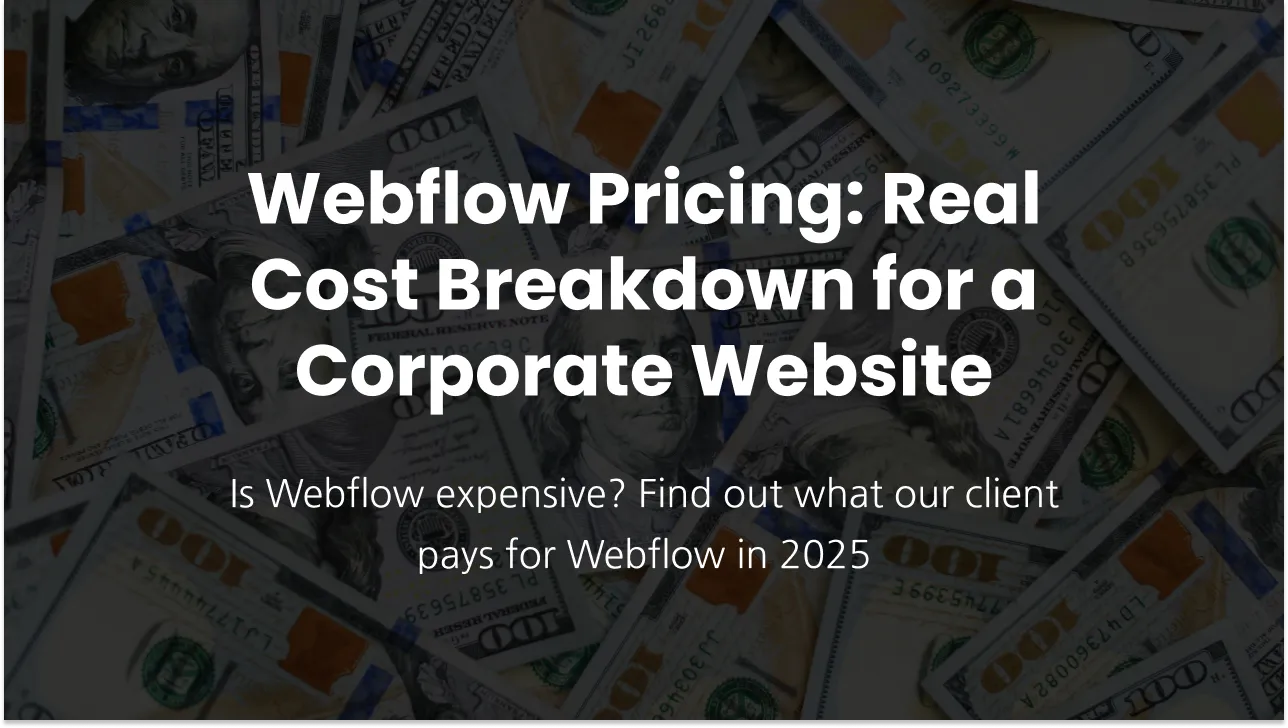Webflow Templates: Yay or Nay?
Recently, an agency reached out with the intention of recruiting me as a Webflow developer. As our interview progressed, we reached the point in the conversation when important questions—usually about money or ambitions—are about to be asked. My interviewer hesitated for a second and then quickly pressed on: “Sometimes we suggest Webflow templates for our clients. Are you comfortable working with such projects?” After a brief pause, they added, “If not, it’s totally understandable!” I felt a little confused at this point. “What’s wrong with the templates?” I wondered to myself. In the conversation that followed, I found out that not all developers agree or at least enjoy working with templates. I would remain adamant in my stance, however, as I knew there were cases when using a template is clearly justified. Allow me to explain further, while sharing my thoughts on the matter.
What are the benefits of templates?
- They save my clients time. Sometimes time is of the utmost importance. Need to launch a new product or service fast? Need to test a theory? Or outrun your competitor? Or present an idea? If so, then it’s a good time to use a template.
- They save my clients money. Template prices vary between $35 and $125 USD. In contrast, the creative process of developing a custom design can last for weeks and cost my clients between $1000–$3000 USD. The real danger here, when approaching the design from an artistic perspective, is that you risk losing sight of the end result. Any loss of focus could draw out the process and make it more difficult. Not all businesspeople realize that design is not an art, but rather a tool to solve certain challenges. When overwhelmed with creative details, people tend to stagnate. (And it’s my job not to let that happen, or to find a way out of such a dark place). Templates offer the benefit of deciding key elements for you. I always emphasize that if we work with a template, only minimal design adjustments are acceptable.
When is it better not to use a template?
- When a custom approach would add value to the brand.
- When my client’s business/idea is non-standard and it would be hard to find a template that would fit for at least 70%.
To what degree can templates be customized?
Templates can serve as a base, which can then be expanded upon significantly. Let me share a recent case of mine where we took a $35 one-page template and turned it into a 9-page website. Apparently, the decision to go with a template has saved my client around $1000–$2000 USD.
I was recommended to Laura by one of my previous clients. Laura runs a beauty studio that has recently switched its business model from being mobile to stationary. She needed a new website that would reflect this change and upscale her personal brand. She was also very decisive about switching from WordPress to Webflow for SEO reasons. On a discovery call, Laura said to me that this business is not her primary source of income, and she’d like to stay focused on her main enterprise. At that point, I realized that we needed to go with a template. Laura chose Beauteria as a basic template and agreed to follow its design vibe. We had a very clear understanding that we would need to expand the original template to accommodate all information about Laura’s services, as well as her blog. As a result, my client got a modern, easily editable, perfectly structured website that now performs better in search results. Laura was very satisfied with the final result. We’ve continued working together now to improve the performance of the website for her primary business. I consider this example a strong case that justifies usage of a template. If we had decided to implement a custom design, Laura would have had to invest more of her time in the process, likely receiving the final result around 2-4 weeks later.
Check live website at https://www.laurasmobilebeautytreats.com
Is it all unicorns and rainbows when it comes to templates?
No. Unfortunately, Webflow templates are developed in pixels. I switched to REM units for the sake of accessibility a couple of years ago. I also use the Client-First naming convention in my builds, and there is always a challenge when I first see the structure of a template. If you have the need and the resources to create a custom website, don’t hesitate to do so. But I still think that in some cases, the benefits of using a template outweigh the drawbacks.
If you need help with choosing a template for your website and/or its adaptation, please don’t hesitate to reach out.








